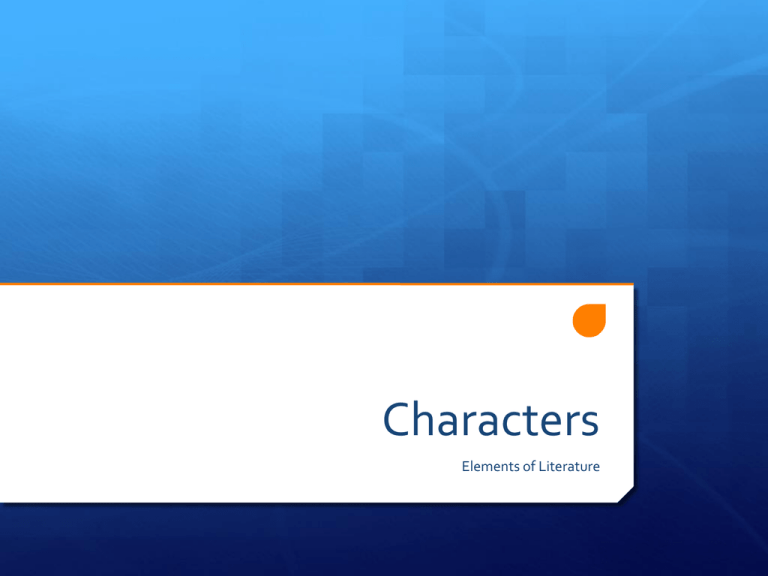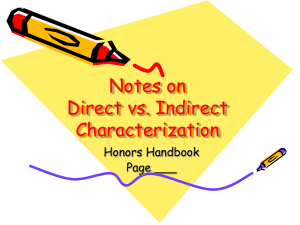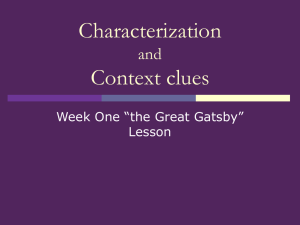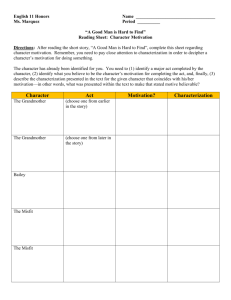characters
advertisement

Characters Elements of Literature What are characters? Characters are the people in the stories that we read. Think of Nag from “Rikki-tikki-tavi” or Le Gleo from “Three Skeleton Key”. How do we learn about characters? Characterization is how a writer reveals a character to the reading audience. Poor characterization can ruin a story and make a character boring. Great characterization can make the reader feel involved with the character and have them care about them, even if the character is a fantasy – like a talking mouse. There are two types of characterization – direct and indirect. What’s the difference? Direct characterization states directly what the character is like. The author flat out tells you about the character. “It is the hardest thing in the world to frighten a mongoose, because he is eaten up from nose to tail with curiosity.” - from “Rikki-tikki-tavi” The author is telling us that RTT is curious! Indirect characterization is when the author shows you what a character is like. This can be done by the character’s appearance, actions, speech, thoughts and feelings, or by other character’s reactions. More about indirect characterization The character’s appearance – typically your first clue about the character, but appearances can be deceiving. “(The Sentinel)’s head nearly touched the ceiling. … Its eyes seemed to glow. Moonlight glittered on its fangs.” - from “Duffy’s Jacket” The character’s actions – seeing how the character acts can tell you about them. “Le Gleo stared at the chief and me vacantly, started as his gaze swung to the multitude of rats against the glass, then suddenly began laughing horribly.” - from “Three Skeleton Key” Still more … The character’s words – what a character says will tell you what they are like. “’Those who kill snakes get killed by snakes,’ said Chuchundra, more sorrowfully than ever. ‘And how am I to be sure that Nag won’t mistake me for you some dark night?’’” - from “Rikki-tikki-tavi” The character’s thoughts and feelings – this is one area were books have an advantage over real life, giving you the opportunity to read a character’s thoughts. What they think shows who they are. “Anyway, I had other things on my mind – like the fact that I was convinced someone had been following us while we were in the woods.” - from “Duffy’s Jacket” And finally… What others say and how they react to the character – what do the other people in the story think of the character? How to they act towards the character? This tells you about the character, but consider the source too. “’He saved our lives and Teddy’s life,’ she said to her husband. ‘Just think, he saved all our lives.’” - from “Rikki-tikki-tavi” Anything else? Character traits – these are the qualities that are revealed by a character’s appearance, spoken words, actions, and thoughts, as well as by how the character affects others in the story. All of these character traits are also known as …. Indirect Characterization! Appearance Dialogue Actions Thoughts and Feelings Other character’s opinions Motivation Motivation – WHY characters do the things they do.




